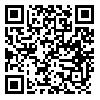Volume 11, Issue 9 (3-2012)
Iranian Journal of Medical Education 2012, 11(9): 1282-1289 |
Back to browse issues page
Download citation:
BibTeX | RIS | EndNote | Medlars | ProCite | Reference Manager | RefWorks
Send citation to:



BibTeX | RIS | EndNote | Medlars | ProCite | Reference Manager | RefWorks
Send citation to:
Johari Z, Davati A, Yousefy A. Assessment of Medicine Students’ academic Achievement in Shahed University during 1993-2011. Iranian Journal of Medical Education 2012; 11 (9) :1282-1289
URL: http://ijme.mui.ac.ir/article-1-2038-en.html
URL: http://ijme.mui.ac.ir/article-1-2038-en.html
, ouhari42@yahoo.com
Abstract: (11154 Views)
Introduction: Continuous evaluation of students' academic achievement in different periods is the basic and inevitable principle for improving the quality of the educational system. Since any change in the planning, management and action for improving quality needs to assess the current situation, this study aimed to assess the educational status of all graduate students at Shahed University.
Methods: This cross-sectional study was designed and implemented at Shahed University during 2011-2012. Subjects were all medicine students entered 1993 and graduated in 2011. The checklist has been prepared according to goals. Demographic information and history of students’ academic achievement has been extracted from students’ educational records. All students who have entered this university from 1993 -2003 were assessed. Data analysis was done by descriptive and inferential statistics (T-Test, ANOVA, Pearson correlation).
Results: During these 10 years, 46 percent students used the Shahed quota and 54% had free quota. The mean diploma score was 15.86±2.79. Minimum input average was in 1372 and maximum was in 1379. Analysis showed positive correlation between mean diploma score with mean scores of basic sciences, apprenticeship and clerkship. There was inverse correlation between the mean diploma score and the number of probation period. There were significant differences between male and female students’ mean score of diploma, basic Sciences, apprenticeship and clerkship. Girls’ scores were higher than boys’ scores. This difference was observed in frequency of academic probation. Male students had more probation.
Conclusion: Institutions are required to review the status of their students and revise necessary items and monitor these revisions. It is essential to pay more attention to students who enter with weak background of secondary school, students who are rejected or have the probation during first years.
Type of Study: Original research article |
Subject:
Program Evaluation
Received: 2012/03/14 | Accepted: 2014/09/9 | Published: 2012/03/15 | ePublished: 2012/03/15
Received: 2012/03/14 | Accepted: 2014/09/9 | Published: 2012/03/15 | ePublished: 2012/03/15
Send email to the article author
| Rights and permissions | |
 |
This work is licensed under a Creative Commons Attribution-NonCommercial 4.0 International License. |




